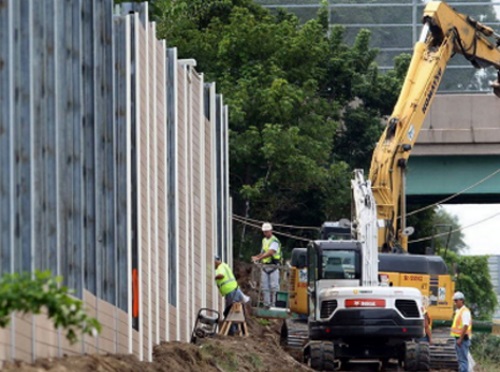In this episode of the Environmental Technical Assistance Program or ETAP Podcast, Noel Alcala – noise and air quality coordinator at the Ohio Department of Transportation – discusses the negative impacts that traffic noise has on humans and the cost-effective solutions designed to mitigate it.
[Above photo of highway sound barrier construction by the Ohio DOT]
From loss of sleep to loss of hearing, excessive noise can pose a real threat– with recent reports identifying a possible link between noise exposure and dementia.
Traffic noise is a major contributor to such “noise pollution” that can contribute to negative health outcomes. However, better highway designs and sound barriers can mitigate the negative impact of traffic noise– and state departments of transportation are working on such solutions for those living near high-level traffic noise areas.
According to the noise barrier inventory maintained by the Federal Highway Administration, more than 3,000 linear miles of noise wall barriers have been built since the 1970s across the United States.
Such sound barriers remain an essential part of highway design and construction as the World Health Organization determined that prolonged exposure to high levels of noise “interferes with people’s daily activities … disturbs sleep, causes cardiovascular and psychophysiological effects, reduces performance and provokes annoyance responses and changes in social behavior.”
Yet the cost of meeting those regulations and protecting the public against a vehicle’s roar— the predominant sound for cars is that of tire-pavement; for trucks, engine, and stack sounds – takes considerable funding.
For example, between 2014 and 2016, FHWA found that total construction costs for noise barriers topped $671 million in just a three-year period – an average of $2 million per mile of noise wall.
That’s why many state DOTs are trying to find ways to reduce the cost of noise abatement efforts, noted Alcala – who also leads the Noise Working Group with the American Association of State Highway and Transportation Officials Committee on Environment and Sustainability.
“The main goal of more accurate noise abatement modeling can result in cost reduction,” he explained. “Modeling noise levels more accurately can likely reduce costs noise wall in construction.”
To listen to the full podcast, click here.

